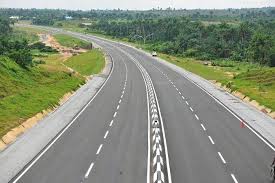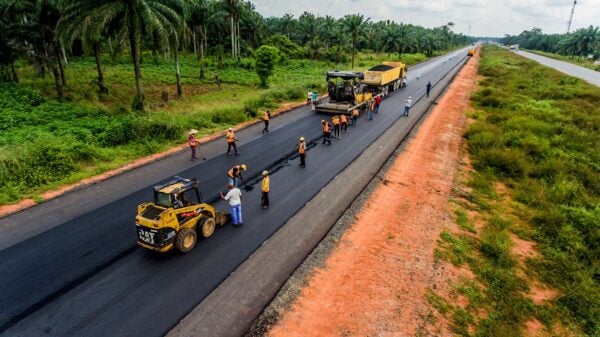By Anthony Emeka Nwosu
Every time the government announces a new road project or commissions a completed one, the same debate resurfaces: Why do roads in Nigeria cost so much to build? Many citizens express frustration, some with valid concerns about inflated contracts, poor quality, and abandoned projects. But behind every kilometer of road is a story of engineering, economics, and logistics that often goes untold.
Road construction is one of the most demanding and expensive forms of public infrastructure anywhere in the world — and Nigeria is no exception. The price tag attached to every project is shaped by multiple technical factors that go far beyond the visible layer of asphalt people drive on.
It Starts with Planning, Not Bulldozers
Before any heavy equipment moves to site, a lot of groundwork happens — literally and figuratively.
A credible road project begins with feasibility studies and engineering designs. Experts carry out topographical surveys, soil tests, and environmental impact assessments to determine the best route, the type of materials required, and how to prevent future failures like erosion or flooding.
In Nigeria’s varied terrain — from swampy riverine areas to rocky highlands — these studies are essential. A poorly planned road will collapse no matter how much asphalt is poured on it. Each test, survey, and design drawing costs money, but they are investments that save billions in future repairs.
The Terrain and Purpose Define the Cost
Not all roads are equal. A rural feeder road linking farms to markets cannot be priced the same as a dual-lane expressway in Lagos or Abuja.
The terrain, traffic volume, and design specifications determine the materials and construction techniques needed.
For example:
- Building a road through waterlogged soil requires extra soil stabilization and drainage structures.
- Mountainous terrains demand cut-and-fill excavation, retaining walls, and sometimes bridges.
- Urban expressways require street lighting, pedestrian walkways, markings, and median barriers.
Each feature adds cost, but also ensures safety, durability, and comfort for road users.
The Layers You Don’t See
Most people think a road is just a layer of tar. In reality, what lies beneath is more important.
A standard road consists of several layers:
- Subgrade – compacted natural soil that serves as the foundation.
- Sub-base – a layer of laterite or crushed stone that provides stability.
- Base course – a stronger aggregate mix that supports the pavement.
- Pavement layer – asphalt or concrete surface that carries traffic.
Each layer must be properly compacted and tested for strength. If the base is weak, the road fails quickly — something we’ve seen too often in Nigeria.
Materials, Labor, and Machines: The Cost Drivers
After design comes execution, and this is where most of the money goes.
Road construction requires massive quantities of materials — sand, gravel, bitumen, steel, and cement. These materials are often hauled from distant quarries or depots, and the transportation cost alone can be enormous, especially when diesel prices rise.
Then there’s equipment — bulldozers, excavators, pavers, rollers, graders — all of which require fuel, maintenance, and skilled operators. Nigeria’s high cost of fuel and spare parts directly affects construction costs.
Labor is another major component. From engineers and surveyors to drivers, welders, and manual laborers, each worker contributes to the final outcome — and each must be compensated fairly.
Indirect Costs: The Hidden Side of Construction
Beyond the visible works are indirect costs that the public rarely considers. These include:
- Project supervision and quality control
- Security for workers and equipment (especially in insecure regions)
- Administrative overheads and logistics
- Permits, insurance, and taxes
- Environmental mitigation (such as tree planting or resettlement of affected persons)
A responsible contractor must budget for all these to deliver a road that meets regulatory and safety standards.
Why Costs Vary Across Nigeria

The price of constructing a road in Nigeria is not uniform. A kilometer in Lagos may cost double what it costs in Kebbi — and for good reason.
Urban projects face right-of-way challenges, utility relocation, and traffic management costs. Rural areas may have cheaper land but more difficult terrain or limited access to materials.
Inflation, exchange rate volatility, and import costs for equipment also affect pricing. So while ₦150–₦300 million per kilometer might sound excessive, it can be reasonable — or even low — depending on the scope.
Transparency Still Matters
All this, however, does not excuse waste or corruption. Nigerians deserve roads that justify their cost. Project details, design standards, and unit rates should be made public. Contractors must be held accountable for both quality and timeliness.
It is not enough to award contracts; project monitoring and community oversight should be integral to the process. When citizens understand how costs are built, it becomes easier to demand accountability without resorting to speculation.
A Call for a Balanced View
Building durable roads is expensive — but neglecting them is costlier. Every failed road leads to more accidents, higher vehicle maintenance, and lost economic productivity. The conversation, therefore, shouldn’t just be about cost, but about value.
If Nigeria wants lasting infrastructure, then planning, quality control, and honest costing must take center stage. We must move from the politics of “how much” to the science of “how well.”
Because a well-built road doesn’t just connect towns — it connects opportunities, reduces poverty, and fuels national development.




